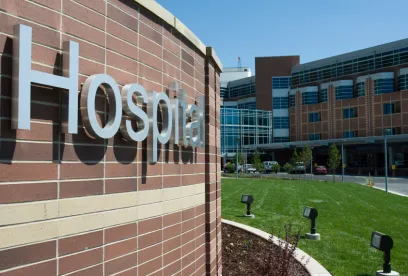Summary
The 21st Century Cures Act encourages biomedical research investment and facilitates innovation review and approval processes, but also serves as a vehicle for a wide variety of other health-related measures, including changes affecting Medicare payments to hospitals and other providers. This post summarizes those Medicare payment related changes.
In Depth
On December 7, 2016, the US Congress approved the 21st Century Cures Act, substantial legislation intended to accelerate “discovery, development and delivery” of medical therapies by encouraging biomedical research investment and facilitating innovation review and approval processes, among other things. The massive bill also serves as a vehicle for a variety of other health-related measures. This On the Subject summarizes titles XV and XVI of the new legislation. We will examine additional titles and provisions of the act in subsequent On the Subject articles over the coming days.
The 21st Century Cures Act includes portions of the Helping Hospitals Improve Patient Care Act of 2016, which was previously approved by the US House of Representatives in June 2016 but not advanced by the Senate. The Helping Hospitals portions broaden exceptions under much-maligned legislation enacted in 2015 that will equalize Medicare payments furnished in new outpatient facilities not on a hospital’s campus beginning in 2017. The legislation, if enacted, would provide much-needed relief for hospitals that were caught off guard by the 2015 legislation. Additionally, the bill makes almost a dozen other payment and regulatory changes of interest to hospitals and post-acute care providers.
President Obama has expressed support for the Cures legislation and is expected to sign the bill this month.
Site-Neutral Payments for Off-Campus Provider-Based Hospital Services (Sections 16001 and 16002)
Section 603 of the Bipartisan Budget Act of 2015, enacted November 2, 2015, limits Medicare payments for items or services (other than services furnished by a dedicated emergency department) furnished at an off-campus outpatient department of a hospital, unless that location was billing as an outpatient department of a hospital prior to the date of enactment. Beginning January 1, 2017, Medicare will pay for such items and services under a modified fee schedule based on the Medicare Physician Fee Schedule, instead of under the Hospital Outpatient Prospective Payment System (OPPS). For more information on plans to implement the original legislative restrictions, see our post summarizing the Centers for Medicare and Medicaid Services’ (CMS’s) final regulations published November 14, 2016.
Almost immediately after the Bipartisan Budget Act was approved, hospitals besieged Congress with complaints about projects—some requiring substantial capital investment—that were already underway and that were undertaken with the expectation of higher Medicare payments under the OPPS. Many hospitals complained that implementation of Section 603, as enacted, would disrupt long-standing plans and result in discontinued services.
The Cures legislation extends grandfather protection to some of these projects. Under the original legislation, a project would not be subject to the site-neutral payment policy if the hospital was furnishing services to Medicare beneficiaries at an off-campus outpatient department location on or before November 2, 2015. Under the new bill, an off-campus outpatient department also could be eligible for higher OPPS payments in 2017 if the host hospital submitted a voluntary provider-based attestation to CMS pursuant to 42 CFR Section 413.65(b)(3) before December 2, 2015. Under separate guidance from CMS governing submission of provider-based attestations, for a hospital to have taken this step, the construction of the new off-campus outpatient department would have had to be complete and the hospital accepting or poised to accept patients.
While this new exception benefits only hospitals with complete projects that fell just short of the furnishing services deadline, another exception in the Cures legislation may apply to more facilities. For services furnished on or after January 1, 2018, the new legislation would except from the site-neutral policy off-campus outpatient department locations that had a “binding written agreement with an outside unrelated party for the actual construction” of the new off-campus outpatient department before November 2, 2015. To be eligible under this alternative exception, the host hospital must also (1) file a provider-based attestation for the new off-campus outpatient department within 60 days of the date of the enactment of the legislation, (2) submit a certification to CMS within 60 days of the date of the enactment that the hospital had the required binding written construction agreement, and (3) add the off-campus outpatient department to the host hospital’s Medicare enrollment form.
While the narrower relief for off-campus outpatient departments with provider-based attestations filed before December 2, 2015, would be applicable only for 2017, the broader relief for off-campus outpatient departments with construction agreements in place as of November 2, 2015, (which would include hospitals eligible for the 2017 exception) would not be available until January 1, 2018. Hospitals able to take advantage of only the broader relief would not be eligible for OPPS payments during 2017 and instead would be subject to lower modified payments until January 1, 2018.
The new legislation also would provide an exemption for off-campus outpatient departments of certain cancer hospitals that file provider-based attestations within 60 days of the date of enactment of the legislation (for departments meeting provider-based requirements between November 2, 2015, and the date of enactment) or within 60 days of the date of meeting provider-based requirements.
Hospitals that were disadvantaged by the 2015 legislation and that can take advantage of one of the new exceptions should take immediate steps to file required paperwork before the specified deadlines.
Hospital Supervision Requirements (Section 16004)
The new bill bars CMS from enforcing direct physician supervision requirements for outpatient therapeutic services in Critical Access Hospitals (CAHs) and small rural hospitals (hospitals in rural areas with no more than 100 beds) through the remainder of 2016.
In 2009, CMS changed the supervision requirements for outpatient therapy services at all hospitals, requiring that a supervising physician be physically present in the department at all times when Medicare beneficiaries are receiving outpatient therapy. However, after considerable pushback, CMS imposed a temporary moratorium on enforcement at CAHs and small rural hospitals. CMS announced in November 2013 that it would end the moratorium effective January 1, 2014, and began implementing and enforcing the supervision requirement for 2014. In late 2014 and again in late 2015, Congress approved similar legislation providing protection for the balance of those years.
Given that 2016 is almost over, this bill provides little prospective relief. Nonetheless, the change will be helpful for hospitals that find themselves the subject of a supervision-related enforcement action in 2016, as this legislation should absolve such hospitals of any wrongdoing.
Hospital Inpatient Short-Stays (Section 15001)
In recent years, policymakers have wrestled with how to respond to an increased frequency of one-day inpatient admissions and extended observation stays in outpatient cases. The Cures bill takes an important step toward eliminating the financial incentives that drive these trends. Specifically, the legislation requires CMS to develop HCPCS codes (used to code outpatient services) associated with 10 surgical MS-DRGs that commonly have a one-day length of stay. While not stated expressly in the legislation, the purpose of establishing these HCPCS codes is to facilitate a crosswalk that will better connect inpatient and outpatient coding and payment systems for hospitals, with the goal of identifying surgeries appropriate for site-neutral payment between inpatient and outpatient settings.
Hospital Readmissions Reduction Program (Section 15002)
The Cures legislation makes changes affecting the Hospital Readmissions Reduction Program to account for the socioeconomic status of a hospital’s patients. Under the current program, hospitals with risk-adjusted readmission rates greater than the national average have payments made under the Inpatient Prospective Payment System (IPPS) reduced. Some hospitals have complained that the current Program does not adequately account for the socioeconomic status of a hospital’s patients, which, as these hospitals assert, can contribute to post-discharge non-compliance and subsequent readmissions.
Under the new bill, CMS will be required to make adjustments based on the patient’s socioeconomic status. Initially, the adjustment will be based on the proportion of patients dually eligible for Medicare and Medicaid that the hospital serves. After completion of previously required studies, CMS may use different standards to account for socioeconomic status.
Documentation and Coding Payment Adjustments (Section 15005)
The Cures bill would further reduce payments under IPPS with more “documentation and coding” adjustments. When CMS implemented new MS-DRGs in 2008 to better classify inpatient discharges under the IPPS, the agency assumed that payments to hospitals would increase because of enhanced coding accuracy. Pursuant to administrative and legislative action, CMS made a series of adjustments to IPPS payments to recoup perceived increases in payments resulting from improved “documentation and coding.” However, CMS committed to undo the adjustments in 2018 by making a one-time 3.2 percent payment increase. The Medicare Access and CHIP Reauthorization Act of 2016 clawed back some money by prolonging the restoration of that adjustment by requiring that it be made in 0.5 percent increments over six years (rather than all at once), and by withholding the 0.2 percent remaining balance.
The Cures bill would further reduce that 0.5 percent adjustment for 2018 by 0.0412 percentage points, to 0.4588 percent; the annual adjustment would return to 0.5 percent for fiscal years 2019 to 2023. Congress took this step as a way to offset the spending increase that would result from other changes in the bill, including the additional relief provided under the site-neutral payment provisions.
Rural Community Hospital Demonstration Program (Section 15003)
The Rural Community Hospital Demonstration Program provides Medicare cost-based reimbursement to certain small rural hospitals that do not quality for cost-based reimbursement under the CAH designation. The new legislation would extend the Demonstration Program for an additional five years (through the end of calendar year 2021) and re-open the application process to hospitals in any state, albeit with priority to hospitals in low population density states.
Durable Medical Equipment Provisions (Sections 16005, 16007 and 5002)
The Patient Access and Medicare Protection Act of 2015 (PAMPA) delayed for one year (until January 1, 2017) the application of durable medical equipment (DME) competitive bidding program (CBP) ceiling payment rates for accessories furnished in connection with complex rehabilitative technology power group three wheelchairs. The Cures bill further delays the application for another six months, until July 1, 2017.
The Cures bill also would delay application of CBP ceiling payments to items in areas not yet subject to CBP. Under current law, CMS based payment on 50 percent of the CBP single payment amount (SPA) and 50 percent of the fee schedule amount for items furnished between January 1, 2016, and June 30, 2016; payments for items furnished effective July 1, 2016, were based 100 percent on the SPA. Under the Cures bill, CMS would extend the 50/50 blend through December 31, 2016, and then implement 100 percent of the SPA amount effective January 1, 2017, effectively delaying implementation of lower payments by six months.
The bill also would offset the cost of these and other changes by advancing already enacted legislation that caps Medicaid payments for select DME items at Medicare payment amounts from the current effective date of January 1, 2019, to January 1, 2018. Current law will begin to cap the amount the federal government will pay states for DME items furnished to Medicaid recipients when sold pursuant to a fee schedule at the rate that would have been paid under Medicare. This existing cap applies only to items sold pursuant to a Medicaid fee schedule, so the cap should not apply to items sold pursuant to negotiated agreements with Medicaid Managed Care plans or furnished pursuant to a pharmacy benefit.
Physical Therapy Services (Section 16006)
The Cures bill allows physical therapists furnishing outpatient physical therapy services in a health professional shortage area, a medically underserved area or a rural area to use specified locum tenens arrangements for payment purposes in the same manner as such arrangements are used to apply to physicians furnishing substitute physician services for other physicians.
Long-Term Care Hospitals (Sections 15004 and 15006-10)
The Cures bill provides relief for long-term care hospitals (LTCHs) under a one-year moratorium on the “25 percent rule,” which would otherwise penalize LTCHs that admit more than 25 percent of their patients from a particular acute care hospital. As modified by Cures, implementation of the 25 percent rule will be suspended during federal fiscal year 2017 (October 1, 2016, through September 30, 2017). The legislation also establishes a number of other new policies and technical changes to existing LTCH statutes, but most of the changes will affect only limited subsets of LTCHs with special circumstances.
The legislation provides an exception to the current moratorium on new LTCH beds to allow for an expansion in the number of LTCH beds at satellite locations of existing LTCHs, so long as the satellite expansion project was in place as of April 1, 2014. Other changes for LTCHs in Cures include modifying the calculation methodology for high-cost outlier payments to LTCHs; removing less favorable length-of-stay provisions for determining when to apply certain site-neutral payment policies that are applicable to hospitals that converted to LTCHs after December 1, 2013; reclassification of certain LTCHs focusing on cancer care to provide for cost-based reimbursement for such hospitals; and temporarily suspending site-neutral payment policies for LTCHs specializing in spinal cord injuries and certain discharges related to severe wound care.
Ambulatory Surgical Centers (Sections 16003 and 4002)
Under the Medicare Meaningful Use Program, physicians must conduct a threshold amount of patient encounters in settings with Certified Electronic Health Record (EHR) technology to meet Program requirements. Patient encounters in the Ambulatory Surgical Center (ASC) setting count, but because ASCs were not included in the original Meaningful Use Program, there is no option available in the ASC setting. The ASC community has argued that this dynamic discourages physicians from furnishing Medicare cases in ASCs. The Cures bill would prohibit CMS from penalizing under the current Meaningful Use Program or its equivalent under the new Merit-Based Incentive Payment System physicians who furnish “substantially all” of their Medicare-covered professional services in an ASC, until such time as CMS certifies an EHR system for ASCs.






 />i
/>i

